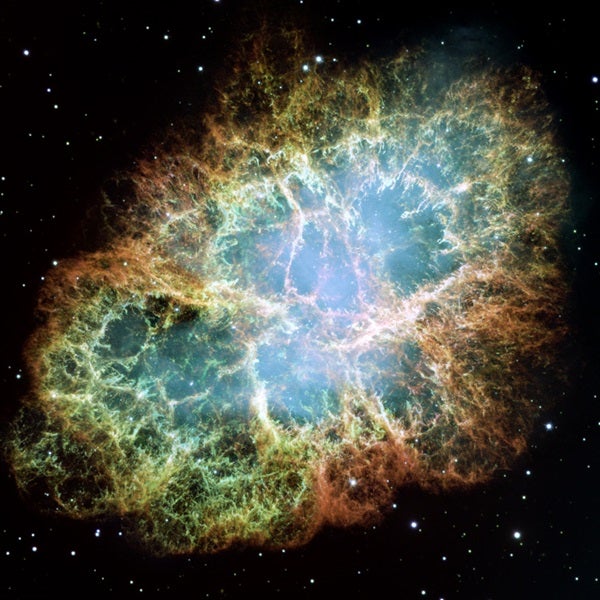The Crab Nebula (M1) has fascinated generations of observers since Chinese astronomers witnessed its supernova explosion July 4, 1054. The Crab Nebula’s colorful and distinct features offer astronomers clues to the universe’s evolution. The more detail scientists can see, the more information they can learn about an object. No other M1 image offers a better view than this one.
The new image combines 24 individual exposures taken with HST’s Wide Field Planetary Camera 2 (WFPC2). The camera gathered the exposures in October 1999, January 2000, and December 2000. Images were taken through different color filters, each unveiling different elements within M1. Blue reveals neutral oxygen; green shows singly ionized sulfur; and red highlights the presence of doubly ionized oxygen.
Allison Loll, a graduate student at Arizona State University, combined the data from these WFPC2 exposures to create the most detailed image of M1 yet made.
“I took all the raw HST images [and] created the individual WFPC2 field mosaics,” Loll told Astronomy.
Loll then “remade these mosaics many, many times to get them right.”
According to Jeff Hester, a member of the WFPC2 science team and a professor of physics and astronomy at ASU, the final product took years to assemble. “It was a very difficult data set for a student to cut her teeth on, but she has done a very good job,” Hester told Astronomy.
Loll’s accomplishment will leave her plenty of data to study as she completes her dissertation on dust formation and abundance variation in the Crab’s filaments.
According to Loll, the mosaics she assembled will be used “in all of my future research. There is so much science there!”
Early results from the data will be published in an upcoming issue of The Astrophysical Journal.
For a gallery of other Crab Nebula images, click here, enter “Crab Nebula” into the field, and then click “search”.
To find M1 in the Star Dome, click here. You also can locate M1 by using the all-sky map in the December 2005 Astronomy.










